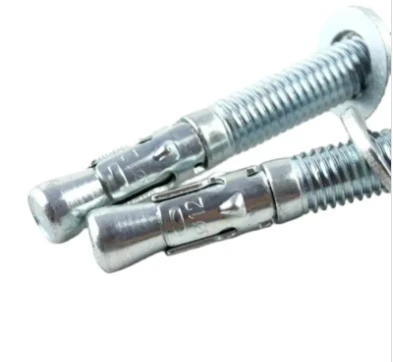Dec . 25, 2024 14:21 Back to list
Choosing the Right M10 Wall Bolts for Your Construction Needs
Understanding M10 Wall Bolts Specifications, Uses, and Installation
When it comes to construction and engineering, the choice of fasteners plays a crucial role in the reliability and durability of structures. Among these fasteners, M10 wall bolts are a popular choice due to their strength and versatility. In this article, we'll explore what M10 wall bolts are, their specifications, applications, and installation tips.
What Are M10 Wall Bolts?
M10 wall bolts are a type of fastener commonly used in various applications where a secure and stable connection is required. The M in M10 denotes the metric sizing system, specifically indicating a diameter of 10 millimeters. These bolts are typically made from strong materials such as carbon steel, stainless steel, or other alloys, ensuring they can withstand significant loads and resist corrosion over time.
Wall bolts are particularly designed to anchor or secure heavy items to a wall, such as shelving units, cabinets, or even machinery. They often feature a threaded shaft with a nut and washer or may have a flat head for a cleaner finish.
Specifications of M10 Wall Bolts
When selecting M10 wall bolts for your project, it's essential to consider the following specifications
1. Diameter M10 bolts have a nominal diameter of 10 mm, making them suitable for medium to heavy-duty applications.
2. Length M10 wall bolts come in various lengths, typically ranging from 50 mm to 200 mm or more, allowing for flexibility depending on the thickness of the materials you are working with.
3. Grade The strength of the bolt is often indicated by its grade. For example, an M10 bolt can be classified as grade 8.8, which is suitable for most structural applications; however, higher grades like 10.9 or 12.9 may be necessary for more demanding tasks.
4. Coating The surface treatment of bolts is also important, with options such as zinc plating, galvanized coatings, or stainless steel finishes available. These coatings help protect against rust and corrosion, especially in outdoor or moist environments.
Applications of M10 Wall Bolts
M10 wall bolts are widely used across various domains due to their robustness
. Some common applications includem10 wall bolts

- Construction They are used in constructing walls, frames, and structures, where they provide secure fastening of components.
- Furniture Assembly M10 wall bolts are ideal for anchoring heavy furniture to walls, helping to prevent tipping and ensuring stability.
- Machinery Installation In industrial settings, they often fasten machinery to base plates or foundations, providing the necessary strength to support heavy equipment.
- Electrical and Plumbing Many installations in plumbing or electrical setups also use M10 wall bolts to secure conduits or brackets to walls.
Installing M10 Wall Bolts
Proper installation is key to ensuring the effectiveness of M10 wall bolts. Here are some steps to consider
1. Preparation Begin by assessing the wall material (brick, concrete, drywall, etc.) to determine the appropriate type of anchor to use alongside the M10 wall bolts. For solid materials, a direct bolt may suffice, while for drywall, you'll need specific wall anchors.
2. Drill the Hole Use a drill to create a hole with a diameter slightly larger than 10 mm. The depth of the hole should match the length of the bolt being used.
3. Insert the Anchor If required, insert a wall anchor into the drilled hole to provide additional support for the bolt.
4. Thread the Bolt Insert the M10 wall bolt through the item you are securing and then into the prepared hole. Ensure it is aligned correctly and is not cross-threaded.
5. Tighten Finally, using a wrench, tighten the bolt until secure, ensuring not to overtighten, which could lead to damage.
Conclusion
M10 wall bolts are a reliable and versatile fastening solution for a wide range of applications, from simple home projects to complex industrial installations. By understanding their specifications, applications, and proper installation techniques, you can ensure a safe and sturdy outcome in your construction efforts. Always remember to choose the right grade and coating for your specific needs to maximize performance and durability.


